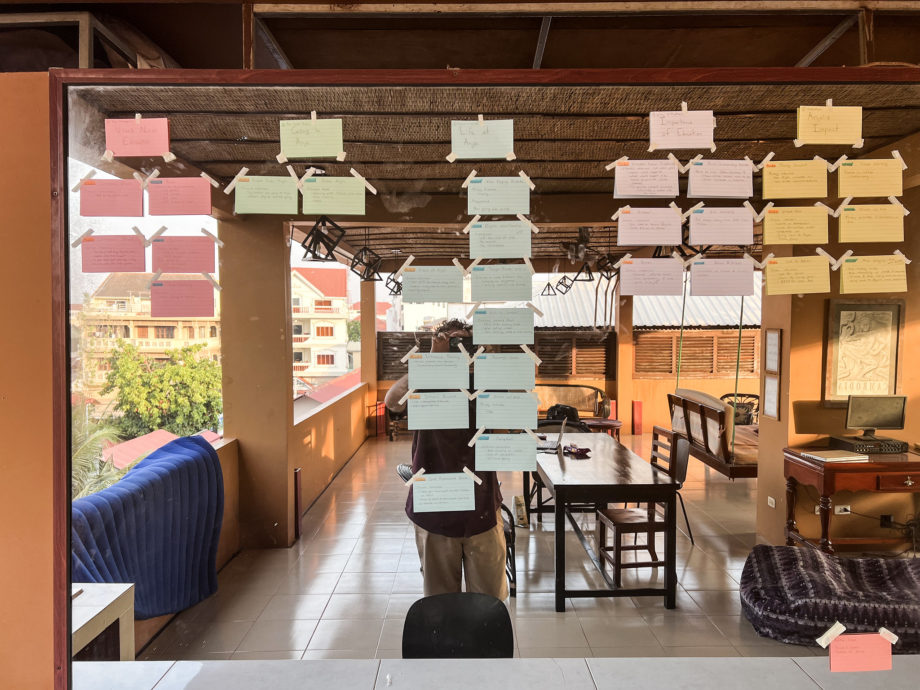How To Craft A Documentary: Choosing the right story structure for your film
Documentary filmmaking is a powerful medium for telling stories, and choosing the right story structure can make all the difference in how your film is received. There are several types of story structures to choose from, each with its own advantages and challenges. In this post, we’ll explore each of these structures and provide practical instructions on how to plan and prep for each one.
Chronological Structure
The chronological structure is the most common and straightforward structure in documentary filmmaking. It presents events in the order in which they occurred, from beginning to end. This structure works well when the story has a clear beginning, middle, and end. To plan and prep for this structure, you should:
- Determine the key events that will drive the story forward.
- Create a timeline of these events and their chronological order.
- Identify any gaps in the story that need to be filled, such as background information or interviews with key players.
- Determine the pacing of the story and how much time to allocate to each event.
Circular Structure
The circular structure involves beginning and ending the story with the same event or idea. This can create a sense of closure and give viewers a sense of perspective on the events they have witnessed. To plan and prep for this structure, you should:
- Identify the key event or idea that will bookend the story.
- Determine how the events in between will lead back to that idea.
- Consider how to keep the audience engaged throughout the story, knowing that they already know how it ends.
- Use foreshadowing and callbacks to create a sense of anticipation and connection between the beginning and end of the story.
Parallel Structure
The parallel structure involves telling two or more stories that are related in some way. The stories are presented in parallel, with the audience moving back and forth between them. This structure works well when the stories are connected thematically or when they provide contrasting perspectives on a particular issue. To plan and prep for this structure, you should:
- Identify the key stories and how they are related thematically.
- Determine how to move back and forth between the stories without confusing the audience.
- Consider how to maintain tension and momentum in each story while still connecting them thematically.
- Ensure that each story is strong enough to stand on its own, as well as being compelling in its relationship to the other stories.
Non-linear Structure
The non-linear structure involves presenting the story in a non-linear fashion, jumping back and forth in time or using flashbacks to reveal key information. This structure can be used to create suspense or to reveal the story in a non-traditional way. To plan and prep for this structure, you should:
- Identify the key events in the story and how they relate to each other.
- Determine which events can be revealed through flashbacks or non-linear storytelling.
- Consider how to maintain coherence and clarity, even as the story jumps back and forth in time.
- Use visual cues or voiceover narration to help the audience follow the story.
Character Driven Structure
The character-driven structure focuses on one or more central characters, with the story unfolding through their experiences and perspectives. This structure works well when the characters are compelling and have a clear arc or journey. To plan and prep for this structure, you should:
- Identify the key character(s) and their stories.
- Determine how to weave their stories together into a larger narrative.
- Consider how to maintain audience interest in each character while still moving the story forward.
- Ensure that each character has a clear arc or journey that is satisfying for the audience.
Issue Driven Structure
The issue-driven structure is focused on a specific social or political issue, exploring the causes, effects, and potential solutions related to that issue. This structure works well when the issue is complex and multifaceted, and when there are multiple perspectives to explore. To plan and prep for this structure, you should:
- Identify the key aspects of the issue that you want to explore.
- Determine which experts, stakeholders, or affected parties to interview.
- Consider how to present the different perspectives on the issue in a fair and balanced way.
- Ensure that the story builds towards a clear call to action or conclusion.
Poetic Structure
The poetic structure emphasizes mood, tone, and emotion over narrative clarity, often using impressionistic or experimental techniques to convey the themes and ideas of the film. This structure works well when the story is more about a feeling or an impression than a traditional narrative. To plan and prep for this structure, you should:
- Identify the key themes or emotions that you want to convey.
- Consider how to use visual or audio techniques to create a mood or atmosphere.
- Determine how to structure the story in a way that conveys the themes or emotions you want to explore.
- Be willing to experiment and take risks with your storytelling approach.
A note on ethics
When making a film about real-life events or people, it’s essential to consult the people who may appear in the film for their input on the story’s structure. This collaboration is not only more ethical but can also result in more dynamic and engaging storytelling. The people who have lived through the experiences depicted in the film have unique perspectives that can provide invaluable insights into how the story should be structured. By involving them in the process, filmmakers can ensure that the film accurately represents their experiences and perspectives.

